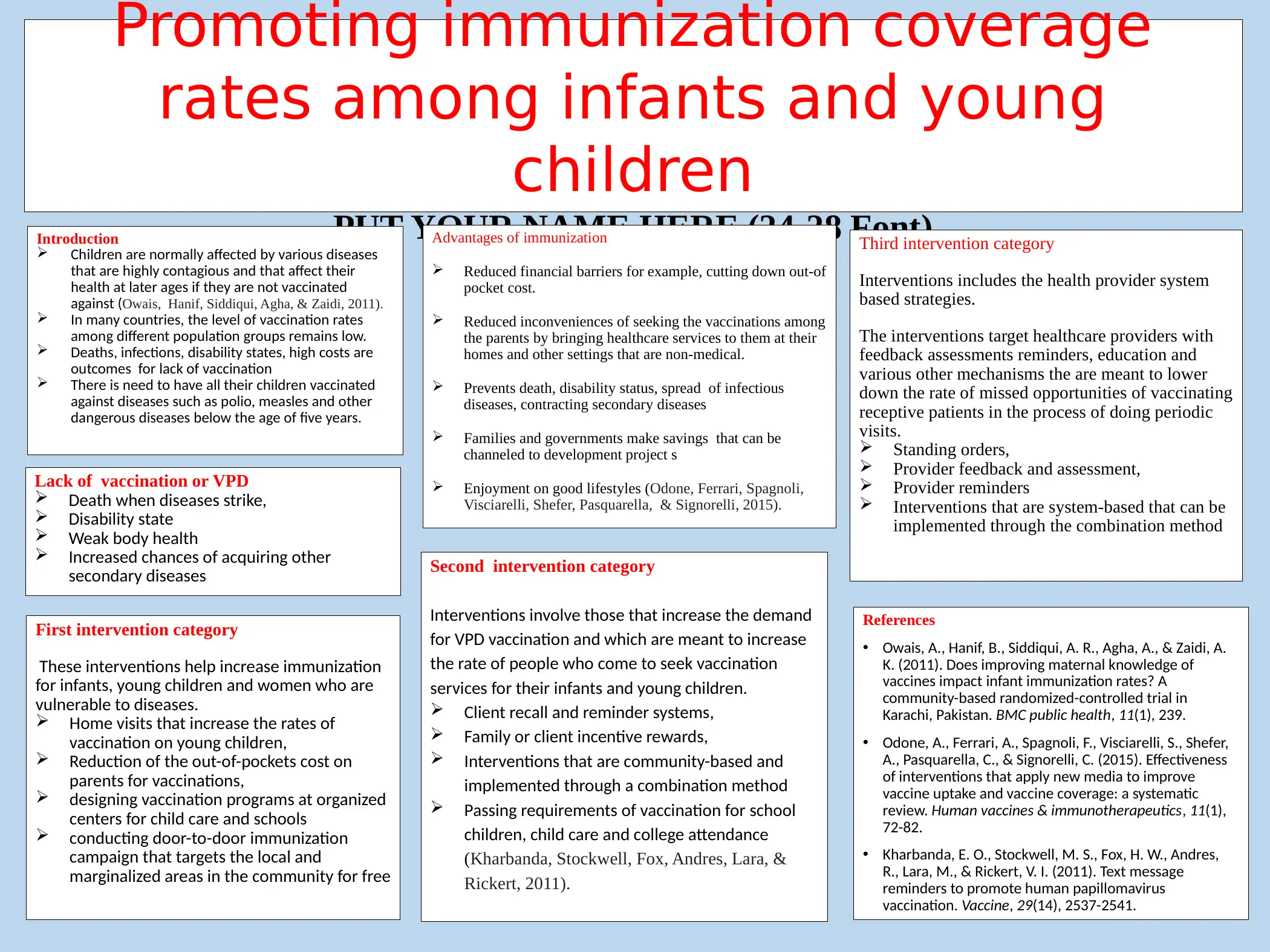Promoting Immunization Coverage Rates: Infants and Young Children
VerifiedAdded on 2022/11/25
|1
|632
|491
Report
AI Summary
This report focuses on strategies to promote immunization coverage rates among infants and young children, highlighting the critical importance of vaccination in preventing diseases and improving overall health outcomes. The report categorizes interventions into three main groups: those targeting the healthcare provider system, interventions aimed at increasing demand for vaccination, and those focused on increasing immunization rates for vulnerable populations. The report also mentions the disadvantages of lack of vaccination or VPD death when diseases strike, disability state, weak body health, and increased chances of acquiring other secondary diseases. Advantages of immunization include reduced financial barriers, reduced inconveniences, preventing death, and savings for families and governments. The report references several studies that support the effectiveness of these interventions, including home visits, client reminder systems, and community-based programs. The report emphasizes the need for comprehensive approaches that address various barriers to vaccination and improve access to immunization services, ultimately contributing to better health outcomes and the prevention of infectious diseases. The report uses Harvard style referencing.

![[object Object]](/_next/static/media/star-bottom.7253800d.svg)